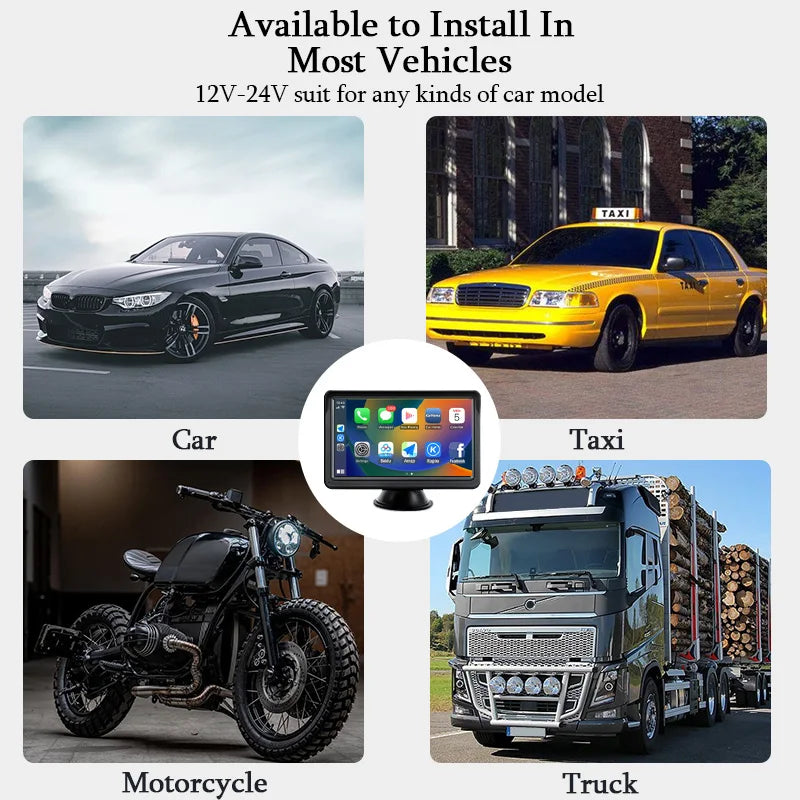CarPlay
CarPlay
Couldn't load pickup availability
- Free Shipping
CarPlay
Certainly! A TV car, or a mobile television production vehicle, is essentially a sophisticated broadcasting studio on wheels, purpose-built to capture, produce, and broadcast live or recorded events directly from remote locations. Here's a detailed description of what you might see and experience with a high-end TV car:
Exterior: A TV car typically resembles a large truck or van, often in striking, branded colors to stand out at events. The body is reinforced to securely house sensitive broadcasting equipment. On the roof, multiple retractable antennas and satellite dishes are mounted, enabling real-time transmission and communication. Some TV cars have a telescoping mast for additional antenna height, improving signal quality in challenging locations. Around the vehicle, you'll find weatherproof storage compartments holding cables, tripods, and other essential gear. These compartments often lock securely, ensuring equipment is safe during transit and setup.
Interior Layout: Inside, the TV car is divided into specialized sections, each designed for a specific part of the production process. Soundproofing is applied to reduce outside noise, which allows the crew to focus without distractions. The interior is lined with racks and consoles holding the latest in video, audio, and transmission equipment.
-
Control Room:
- The control room, or "production suite," is the heart of the TV car. Here, a row of monitors displays multiple camera feeds, graphics, and live editing views. An array of switches, sliders, and controls allows the technical director to switch between camera angles, adjust visual effects, and oversee the overall production.
- Often, there’s a director’s seat, with large, high-definition screens mounted above a control panel covered with switches, buttons, and color-coded dials. The director and crew can communicate with on-site cameramen, reporters, and other team members through headsets, ensuring seamless coordination during live broadcasts.
-
Audio Mixing Area:
- Adjacent to the control room, the audio area is equipped with a digital mixing console to balance audio from various sources, including reporters’ microphones, sound effects, and crowd noise. Advanced equalizers and compressors ensure clear, professional audio quality.
- Here, audio technicians use headsets and monitors to balance live sounds while isolating unwanted noise. Sound engineers can tweak levels, apply filters, and monitor audio feeds in real time.
-
Editing and Graphics Bay:
- For broadcasts that require pre-made graphics or quick replays, the editing bay includes a computer station equipped with editing software. This setup allows editors to process footage, add overlays, or include real-time stats.
- Graphics specialists can create on-the-fly visuals, such as scoreboards, captions, and animations, which are then sent to the director’s screen for approval before going live.
-
Transmission Hub:
- This area handles the final broadcast signal, sending it through satellite uplinks, fiber-optic cables, or cellular networks. Technicians monitor signal strength and quality, making adjustments to avoid delays or interruptions.
- Redundant systems are often in place, ensuring continuous transmission even if one method fails.
-
Power Supply and Cooling Systems:
- TV cars are often equipped with their own power supplies, such as generators or powerful batteries, to operate independently in remote locations. Efficient cooling systems keep the interior at optimal temperatures, as the equipment generates a lot of heat.
Additional Features:
- Camera Storage and Setup Station: Some TV cars include a dedicated area for storing cameras, lenses, lighting equipment, and other gear. Technicians can quickly access this space to grab replacement equipment.
- Communication Hub: This is a dedicated space where crew members communicate directly with head office, producers, and sometimes even viewers on social media.
Advanced Technology: State-of-the-art TV cars might include cutting-edge tech, like AI-powered live editing, drones for aerial shots, and remote-controlled cameras that can be operated from within the truck. The setup also often includes mobile internet solutions for streaming in remote areas with weak cellular service.
In essence, a TV car is a compact, fully equipped television studio designed to bring high-quality live broadcasting to any location. It’s designed for maximum versatility and efficiency, allowing teams to work seamlessly in high-pressure, fast-paced environments.
Share


























